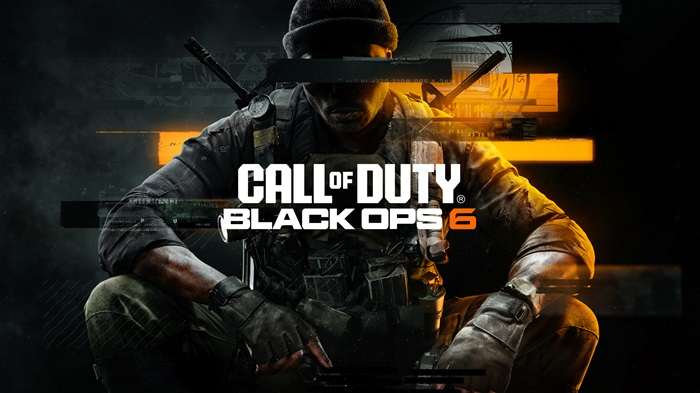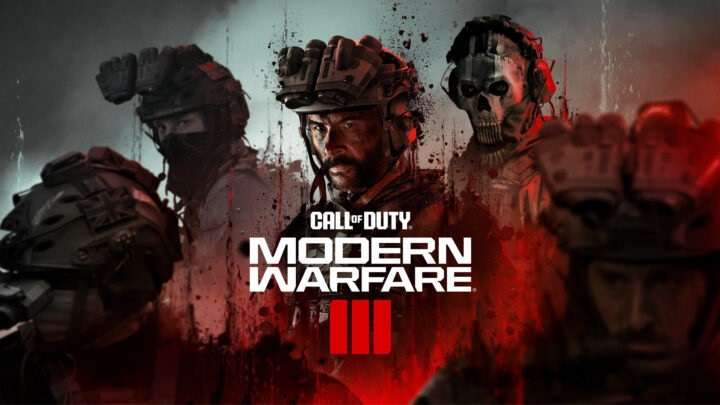The Call of Duty franchise is one of the most influential and successful video game series of all time. Launched in 2003, this first-person shooter (FPS) has gone through multiple eras of warfare, from World War II to futuristic battles in space. Its evolution has made it a cultural juggernaut, with millions of players engaged across various platforms. This article takes you on a chronological journey through every mainline Call of Duty game, exploring its history, gameplay mechanics, and significance.
1. Call of Duty (2003)
The original Call of Duty was released in 2003 and set the stage for what would become a globally beloved franchise. Developed by Infinity Ward, the game was praised for its immersive World War II setting. It allowed players to experience the war from multiple perspectives: American, British, and Soviet soldiers.
Key Features:
- Focus on squad-based gameplay.
- Cinematic feel, inspired by war movies.
- Introduced the concept of health regeneration (through health packs, not automatic regeneration).
This game set the tone for future titles, establishing Call of Duty as a serious contender in the FPS genre.
2. Call of Duty 2 (2005)

Released in 2005, Call of Duty 2 improved upon the original in nearly every way. The game featured more expansive maps, improved AI, and a refined health regeneration system. It was also a launch title for the Xbox 360, giving console gamers an early taste of next-gen graphics.
Key Features:
- Refined AI for more realistic combat scenarios.
- Larger, more open levels.
- Improved multiplayer experience.
3. Call of Duty 3 (2006)
Call of Duty 3 came out in 2006 and was the first in the series to be developed by Treyarch. The game focused exclusively on console platforms, leaving PC players in the dust. It maintained the World War II setting and delivered an engaging multiplayer mode.
Key Features:
- Introduction of vehicle combat in multiplayer.
- Focused on the Normandy breakout campaign.
- 24-player online multiplayer on consoles.
4. Call of Duty 4: Modern Warfare (2007)
This is where the franchise truly changed the gaming landscape. Call of Duty 4: Modern Warfare moved away from the World War II setting and placed players in a modern, fictional conflict. The game’s cinematic single-player campaign, combined with an innovative and addictive multiplayer mode, made it an instant classic.
Key Features:
- Perks and killstreaks introduced in multiplayer.
- Immersive single-player campaign.
- High-quality graphics and realistic combat scenarios.
Modern Warfare became a cultural phenomenon and set the standard for modern FPS games.
5. Call of Duty: World at War (2008)
Returning to its World War II roots, World at War was developed by Treyarch and brought a darker, grittier tone to the series. The game introduced the now-iconic Nazi Zombies mode, which became a fan favorite and a staple in future Treyarch titles.
Key Features:
- Co-op campaign mode.
- Introduction of Nazi Zombies.
- Brutal, realistic combat with flamethrowers and more.
6. Call of Duty: Modern Warfare 2 (2009)
The follow-up to Modern Warfare, this game expanded on the successful formula with a more intense campaign, larger multiplayer maps, and new killstreak rewards. Modern Warfare 2 is remembered for its controversial “No Russian” mission and its explosive, action-packed story.
Key Features:
- Expanded multiplayer with customizable killstreaks.
- Introduction of the Spec Ops mode.
- One of the best-selling games of all time.
7. Call of Duty: Black Ops (2010)
Black Ops, developed by Treyarch, took players to the Cold War era, offering a unique blend of historical fiction and conspiracy theories. The multiplayer was a huge success, and Zombies mode was expanded upon with more maps and features.
Key Features:
- Cold War setting with a focus on espionage.
- Wager matches and customizable loadouts in multiplayer.
- Deep Zombies mode with hidden Easter eggs.
8. Call of Duty: Modern Warfare 3 (2011)
The conclusion of the Modern Warfare trilogy, Modern Warfare 3, tied up loose ends and delivered a highly polished multiplayer experience. Developed by both Infinity Ward and Sledgehammer Games, it wasn’t as groundbreaking as its predecessors but still managed to be a commercial success.
Key Features:
- Survival mode in Spec Ops.
- Larger, more expansive multiplayer maps.
- Conclusion of the Modern Warfare storyline.
9. Call of Duty: Black Ops II (2012)
Black Ops II innovated by introducing branching storylines and futuristic combat scenarios. It was the first game in the series to feature a future setting (2025) and included advanced weaponry and technology.
Key Features:
- Branching single-player campaign with multiple endings.
- Introduction of League Play in multiplayer.
- Zombies mode with even more depth and complexity.
10. Call of Duty: Ghosts (2013)
Call of Duty: Ghosts marked a departure from the Modern Warfare and Black Ops storylines, offering an all-new narrative focused on a post-apocalyptic America. Despite its ambitious setting, the game received mixed reviews for its lack of innovation.
Key Features:
- Introduction of dynamic multiplayer maps.
- New Extinction mode, replacing Zombies.
- New narrative with a focus on a covert military unit called “Ghosts.”
11. Call of Duty: Advanced Warfare (2014)
Advanced Warfare introduced futuristic combat with exoskeletons, allowing for enhanced mobility and new abilities. Developed by Sledgehammer Games, it pushed the franchise into a new era with a more vertical style of gameplay.
Key Features:
- Exosuits, allowing for double jumps and boost dashes.
- Star-studded cast featuring Kevin Spacey.
- Futuristic weaponry and advanced tech in multiplayer.
12. Call of Duty: Black Ops III (2015)
Set in a dystopian future, Black Ops III continued the trend of futuristic warfare but with a focus on super soldiers and cybernetic enhancements. The game’s multiplayer introduced wall-running and thrust jumping, making for fast-paced, chaotic gameplay.
Key Features:
- Specialist characters with unique abilities.
- Enhanced movement system with wall-running.
- Deep, story-driven Zombies mode.
13. Call of Duty: Infinite Warfare (2016)
The most futuristic Call of Duty to date, Infinite Warfare took the series to space. While it received criticism for its departure from grounded warfare, the game was praised for its ambitious single-player campaign and solid multiplayer.
Key Features:
- Space combat with zero-gravity gunfights.
- Zombie mode with a retro 1980s theme.
- Focus on a new interstellar war narrative.
14. Call of Duty: WWII (2017)
After years of futuristic warfare, Call of Duty returned to its roots with WWII. The game aimed to bring back the gritty realism of the original titles, focusing on the European theater of World War II.
Key Features:
- Boots-on-the-ground combat, no futuristic movement.
- Gripping single-player campaign with historical accuracy.
- War mode in multiplayer, focusing on objective-based gameplay.
15. Call of Duty: Black Ops 4 (2018)

Black Ops 4 was the first in the series to abandon a traditional single-player campaign in favor of a battle royale mode called Blackout. The game was multiplayer-focused, with an emphasis on team-based tactics.
Key Features:
- Blackout mode, a precursor to Warzone.
- Expanded Zombies mode with multiple storylines.
- Tactical, team-based multiplayer without advanced movement mechanics.
16. Call of Duty: Modern Warfare (2019)
A reboot of the iconic Modern Warfare series, this game brought back beloved characters like Captain Price but reimagined in a more grounded, realistic conflict. The multiplayer also introduced the free-to-play Call of Duty: Warzone battle royale mode.
Key Features:
- Realistic, gritty narrative focused on modern conflicts.
- Gun customization in Gunsmith mode.
- Cross-play between consoles and PC.
17. Call of Duty: Black Ops Cold War (2020)
Set during the Cold War, this game acted as a direct sequel to the original Black Ops. It featured a blend of historical events and fictional conspiracies. The multiplayer and Zombies mode were well-received, offering classic Black Ops gameplay with modern improvements.
Key Features:
- Cold War espionage-themed campaign.
- Classic multiplayer with a Cold War twist.
- Continuation of Zombies mode with new features.
18. Call of Duty: Vanguard (2021)
Vanguard took players back to World War II, but with a fresh perspective. It focused on the origins of special forces, with a cinematic campaign spanning various theaters of the war.
Key Features:
- World War II setting with a focus on the birth of special forces.
- Deep customization in multiplayer.
- A new Zombies storyline developed by Treyarch.
19. Call of Duty: Modern Warfare II (2022)
Modern Warfare II was the highly anticipated sequel to the 2019 reboot, continuing the story of Task Force 141 and its battle against global threats. The game built on the foundation of its predecessor, offering a blend of tactical gameplay and cinematic storytelling.
Related Post:
Big Brother Reindeer Games: A Winter Wonderland of Competition
2 Player Games Unblocked: The Ultimate Guide to Fun and Friendly Competition


